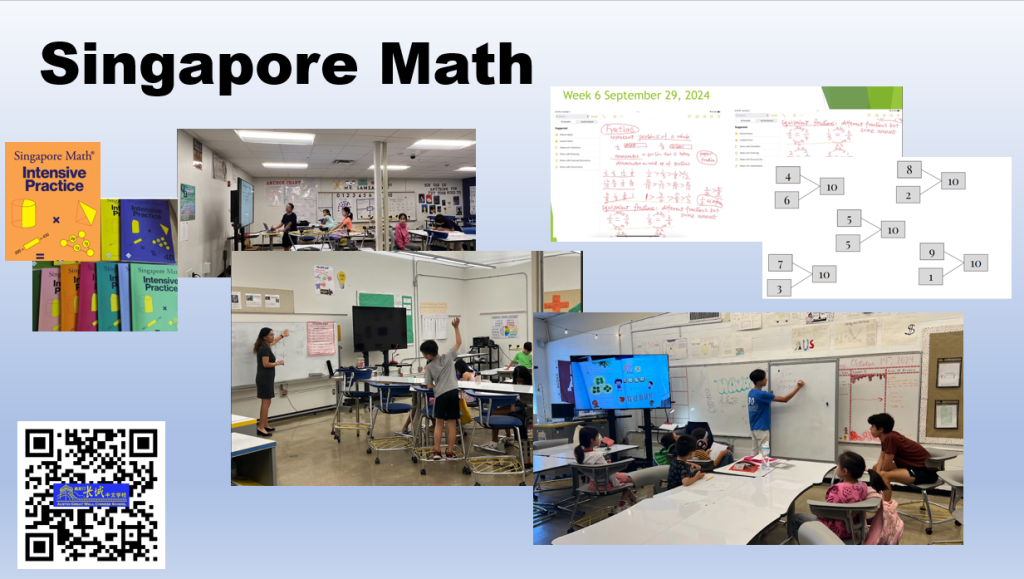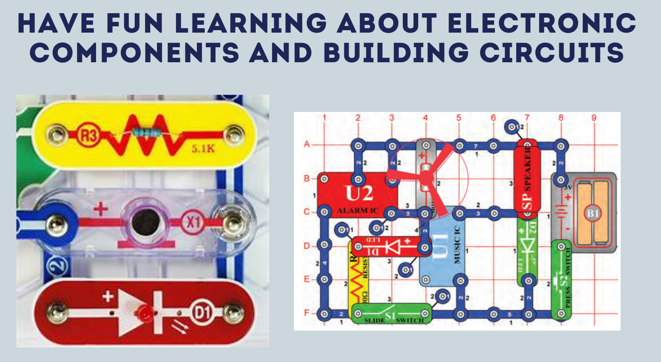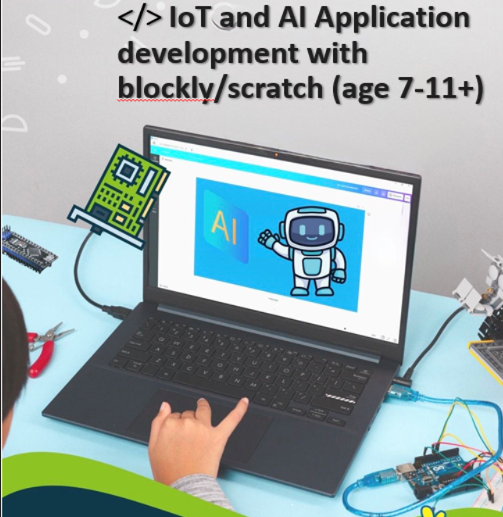Our Goals and Visions:
- Cultivate Analytical Thinkers: By fostering inquiry, problem-solving, and critical analysis, our STEM courses prepare students with the skills needed to tackle real-world challenges and ensures that students understand scientific principles, apply mathematical reasoning, and engage with technological advancements.
- Develop 21st-Century Skills: Provides opportunities for students to engage in teamwork, collaboration, communication, problem-solving essential for success in our ever-evolving world.
- Promotes Equity and Inclusion: Ensures that all students, regardless of background or identity, have access to our high-quality STEM courses. We aims to close achievement gaps and promote diversity in STEM fields
We offer a variety of STEM classes in AGWCS to help students grow, and our curriculum is continually evolving. Below is a list of current classes and potential new offerings, depending on available funding and resource.

Math & Science
- Singapore Math – Math isn’t just a subject, but the language of the universe. It’s the foundation upon which all of science, technology, engineering, and mathermatics (STEM) is built.
At AGWCS, we’ve chosen Singapore Math as Core of Mathematic instruction and offer Math classes from Grade 1-6. Singapore Math is renowned for its focus on Problem-Solving and in-depth understanding. The CPA (Concrete, Pictorial, Abstract) teaching method is a great way to make abstract mathematical concenpts more tangible. By encouraging students to use graphic models, it helps them to develop a much clearer grasp of the underlying principles and cultivate a deeper mathematical awareness.
2. Physics:
a) Physics I – This course focuses on principle of Physics mechanics, tailored for students who has already completed Algebra. No prior experience with Physics is necessary. By the end of this course, student will be well-prepared to tackle the AP Physics I test and participate in the ‘F=ma” contest, an integral part of the selection process for U.S Physics Olympic team.
b) Physics II – This course covers Physics 2 and includes topics such as Sound & Waves, Eletromagnetism, Fluids, Optics, Thermodynamics, and Modern Physics. It is designed for students who have completed Physics I – Mechanics. Upon completion of this course , students will be prepared to take the AP Physics II test.
c) Physcis C – This course is centered on Physics C – Mechanics and E&M (Electromagnetic). It is tailored for students who have successfully completed Calculus in math, as well as Physcis I & Physics II. Upon successfully completing this course, students will be well-prepared to take AP Physics C test.
d) “F=ma” Physics Competition – This course is designed to assist students who are interested to compete in “F=ma” competition in February. The prerequisite is to finish Physics I. For middle school and early high school students interested in physcis should start your F=ma training as early as possible.
Programming & Robotics
- “Scratch” Programming with Robotics – Learn Scratch programming and discover how to integrate it with hardware. As an introductory language, Scratch makes coding accessible to even the the most novice learners. Through this course, students will learn to utilize hardware sensors to gather data and control various functions in their robotic projects.
- Python Programming with Robotics – Python serves as an excellent tool for learning text-based programming languages. Students will learn to write script to control basic movements and integrate to sensors, allowing the robots to detect obstatcles and navigate its environment. As students progress, they will dive into more advanced algorithms enabling the robots to perform tasks autonomously.
- Java Programming – Java is a object-oriented programming language known for its platform independence, meaning code written in Java can run on various operating system and applications. This is the introductory class to java programming where student start to learn the fundamental and basic of java programming.
- Robotic Introductory using LEGO Technic – Introduce students to basic mechanical structures and concepts, and learn problem solving skills through hands-on building activites with LEGO technic. Students will gain knowledge of simple mechanics like gears, levers and linkages, lift mechanism, clamp mechanism, pulley systems etc.
- Fun with Circuit Electronics – In this course, students will be guided through core concepts of electrical engineering, introducing them to Analog and Digital Logic circuits and electrical components through hands-on projects. Students start with basic circuit designs, learning about essential components such as resistors, capacitors, LEDs etc and progress to more complex projects.
- IoT and AI Application development with blockly/scratch – This course introduces students to Artificial Intelligence and Internet of Things through hands-on projects. Using real hardware and interactive tools, young learners will explore machine learning, IoT devices, AI art creation, computer vision, and chatbots in engaging 2-hour sessions designed to make cutting-edge technology accessible and fun.
- 3D Printing – Learn the fundamental of 3D printing, equipping students with the skills needed for model construction and creation for FTC (FIRST Tech Challenge) or FRC (FIRST Robotics Competition).
- Physics behind Robotics – Introduce students to the principles of physics that are essential to robotics. They’ll learn how key physics principles like mechanics and electromagnetism, thermodynamics, and optics are crucial in designing, developing, and operating robots.







